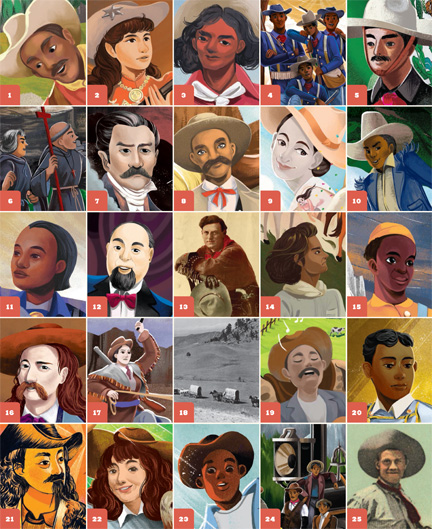 Recently, I was delighted to connect with writer and musician, Mifflin Lowe. His latest children’s book, The True West (Bushel & Peck, 2020), is a journey to the American West and focuses on the individuals often left out of the popular narratives. Here we meet African American, Latino, Asian, and American Indian soldiers, inventors, workers, pioneers, cowboys…AND cowgirls! Filled with historic photos, amazing facts, helpful definitions, and illustrations by Wiliam Luong, it’s a fantastic, fascinating, and dynamic resource. I lassoed Mifflin for a few questions about his work…
Recently, I was delighted to connect with writer and musician, Mifflin Lowe. His latest children’s book, The True West (Bushel & Peck, 2020), is a journey to the American West and focuses on the individuals often left out of the popular narratives. Here we meet African American, Latino, Asian, and American Indian soldiers, inventors, workers, pioneers, cowboys…AND cowgirls! Filled with historic photos, amazing facts, helpful definitions, and illustrations by Wiliam Luong, it’s a fantastic, fascinating, and dynamic resource. I lassoed Mifflin for a few questions about his work…
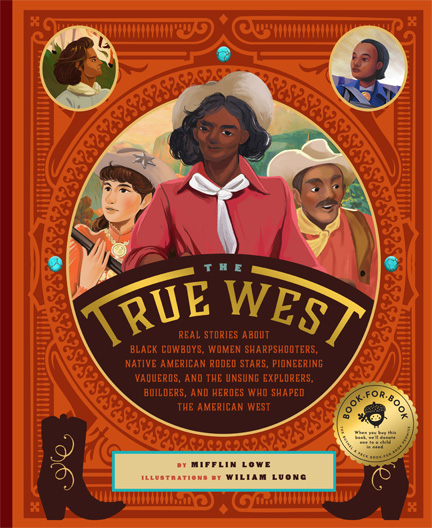
How did this project come to be?
I wrote a picture book and an animated film called The Awesome, Amazing, Occasionally Incredible Adventures of Cowboy Howie, about a mixed race boy from New York City who dreamed of being a cowboy. In his imagination the city’s canyons turned into the Grand Canyon, dogs became wolves, pigeons became eagles etc.
What was the research like for the book? Did you, for example, get a hankering to visit some Western locations? Saddle up Old Paint?
Research was fascinating. I did it mostly online and I learned a ton about the people and the life in the West. The people were all tough and I mean that in the best possible way — the were incredibly resilient from Calamity Jane to Stagecoach Mary Fields to Fox Hastings to Bass Reeves.
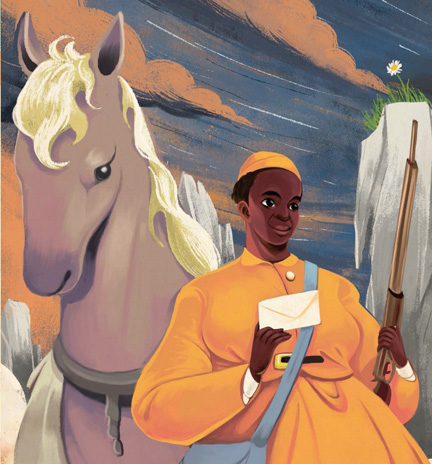
Mary Fields
Who was your favorite person to research?
Well maybe Annie Oakley – she was under 5 foot tall and could shoot a dime thrown in the air at 20 paces, and shoot while standing on the back of a galloping horse. Also, Bass Reeves who was a Black lawman who arrested over 3,000 criminals — more than Wild Bill Hickok and Wyatt Earp put together. Bass is supposedly the person the Lone Ranger was based on. Bass always left silver dollar at the scene of a crime he’d solved — like the Lone Ranger did with his silver bullets. Also, Jackson Sundown, the Native American rodeo rider who was probably the best ever and Mamie Hafely who used to jump off a five story tower on the back of her horse into a pool of water
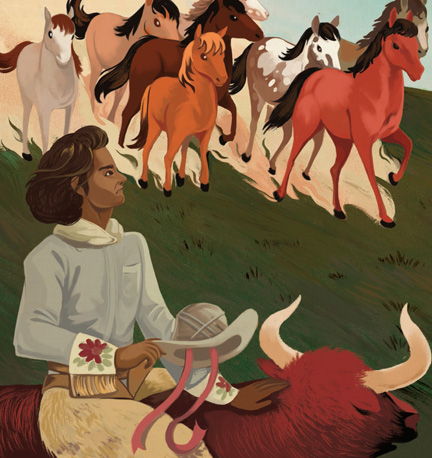
Jackson Sundown
What’s one thing that surprised you when working on this book?
How strong, determined and hard working all these people were. They never gave up and never gave in.
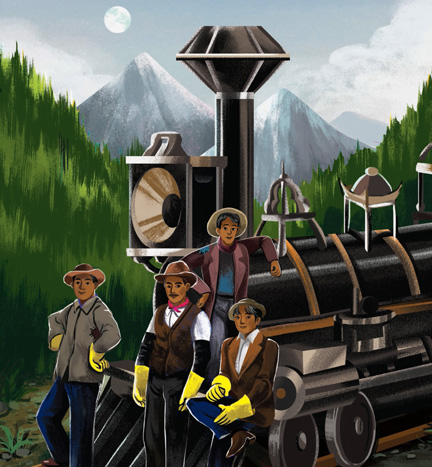
Chinese Railroad Workers
In the Calamity Jane chapter, you mention the “flat-out cool’ nicknames from the Wild West. What would your nickname be?
Mr. Smartypants, maybe? Naw, I don’t know… maybe Muffin… like Mifflin…people sometimes make the mistake.
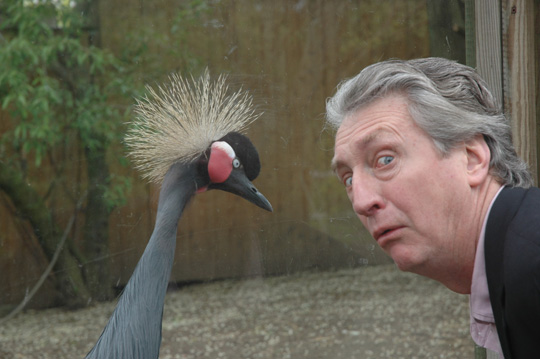
Muffin Lowe
Images courtesy of Mifflin Lowe and Bushel & Peck Books. Illustrations by Wiliwam Luong.

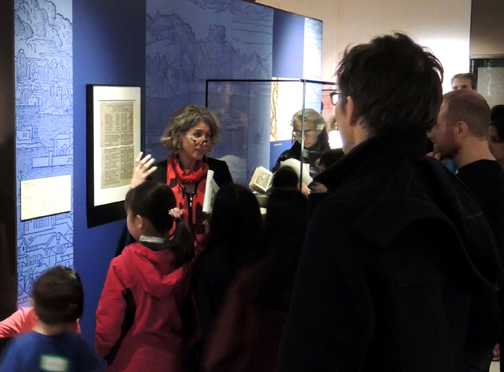 Recently, the
Recently, the 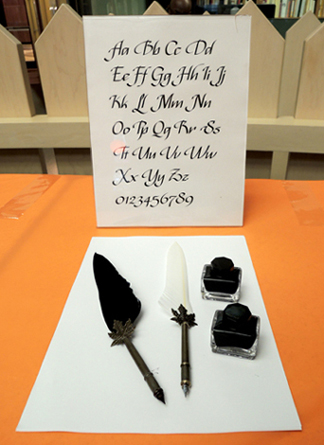 For the calligraphy activity, we purchased both traditional feather quill pens and metal nib quill pens on Amazon, along with bottles of ink. Katie printed different examples of calligraphy so kids could replicate some letters. We also had calligraphy pens and brush pens in rainbow colors. Everyone loved trying the pens, and the calligraphy wasn’t just limited to the English language…
For the calligraphy activity, we purchased both traditional feather quill pens and metal nib quill pens on Amazon, along with bottles of ink. Katie printed different examples of calligraphy so kids could replicate some letters. We also had calligraphy pens and brush pens in rainbow colors. Everyone loved trying the pens, and the calligraphy wasn’t just limited to the English language…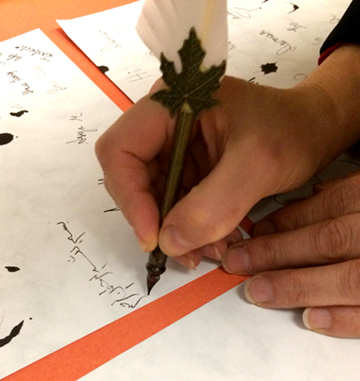 We also had a massively popular typewriter petting zoo. There were 5 typewriters in all, 2 working, 2 non-working, and 1 toy for the really little kids. Kids could touch, explore, and clatter away on them! Katie and I were a wee bit worried about how loud the zoo would be, but quickly learned that the sound of multiple typewriters is actually incredibly soothing (at least to us!).
We also had a massively popular typewriter petting zoo. There were 5 typewriters in all, 2 working, 2 non-working, and 1 toy for the really little kids. Kids could touch, explore, and clatter away on them! Katie and I were a wee bit worried about how loud the zoo would be, but quickly learned that the sound of multiple typewriters is actually incredibly soothing (at least to us!).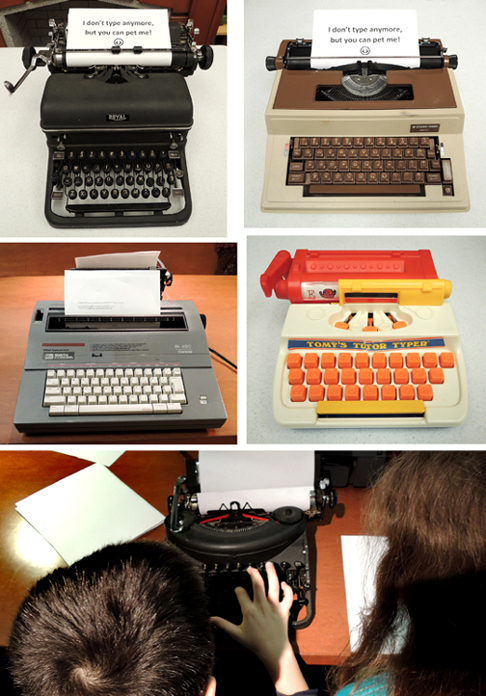 The final activity was something I’ve been wanting to do ever since I spotted in on the
The final activity was something I’ve been wanting to do ever since I spotted in on the 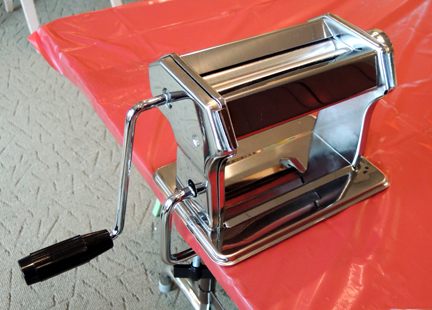 The steps for the activity are as follows: Firs, use a tool to carve a design into a foam sheet. The tool can be a pen, pencil, or wooden scratch art styluses. The foam sheets are the same material that meat is packaged on. We bought thinner versions on Amazon (Presto foam printing plates, a 100 pack of 6″ x 4″ sheets is $15).
The steps for the activity are as follows: Firs, use a tool to carve a design into a foam sheet. The tool can be a pen, pencil, or wooden scratch art styluses. The foam sheets are the same material that meat is packaged on. We bought thinner versions on Amazon (Presto foam printing plates, a 100 pack of 6″ x 4″ sheets is $15).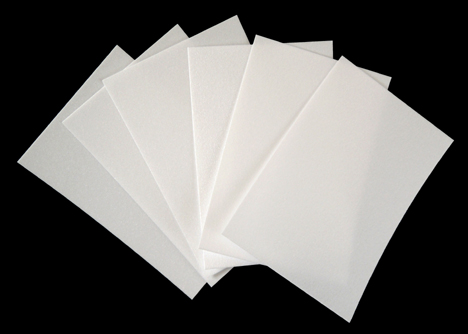 Next, roll paint over your engraved foam sheet. We used trays to reduce the mess. They were definitely helpful!
Next, roll paint over your engraved foam sheet. We used trays to reduce the mess. They were definitely helpful!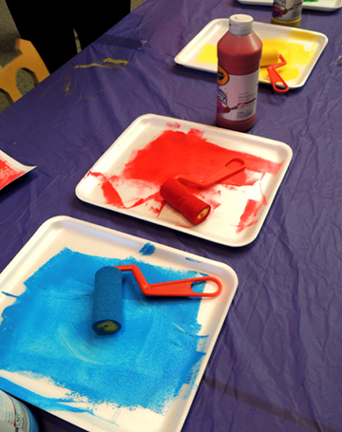 Finally, place a piece of paper on top of your painted engraving and run it through the pasta machine printing press. Peel the foam sheet and the paper apart, and you have a beautiful custom print!
Finally, place a piece of paper on top of your painted engraving and run it through the pasta machine printing press. Peel the foam sheet and the paper apart, and you have a beautiful custom print!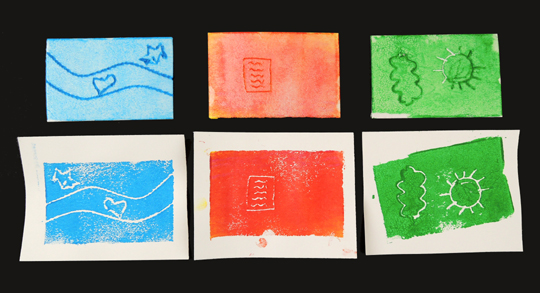 Important! Make sure the pasta machine is set to a wider setting. As you can see in the photo below, if the machine setting is too narrow, the paint will just squish into the lines of your engraving. The wider setting allows to white lines of your design to appear.
Important! Make sure the pasta machine is set to a wider setting. As you can see in the photo below, if the machine setting is too narrow, the paint will just squish into the lines of your engraving. The wider setting allows to white lines of your design to appear.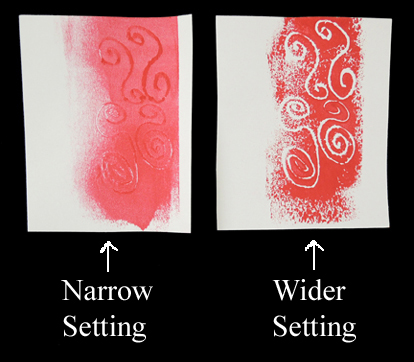 Also, make sure kids know that if they want to print words, they have to carve them backwards as the printing process reverses the carved image. And you might want paper plates handy so kids can transport their still-damp prints home.
Also, make sure kids know that if they want to print words, they have to carve them backwards as the printing process reverses the carved image. And you might want paper plates handy so kids can transport their still-damp prints home.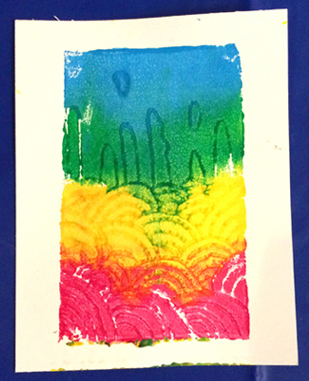
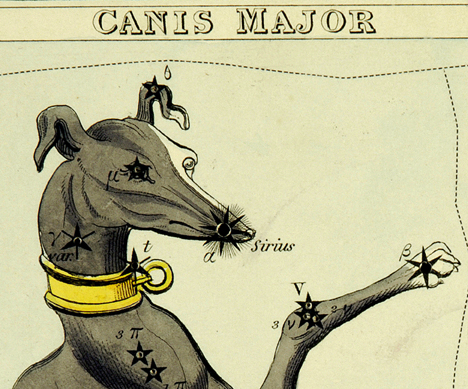 Thought these might come in handy for your summer reading “Universe of Stories” theme…with a historical twist!
Thought these might come in handy for your summer reading “Universe of Stories” theme…with a historical twist!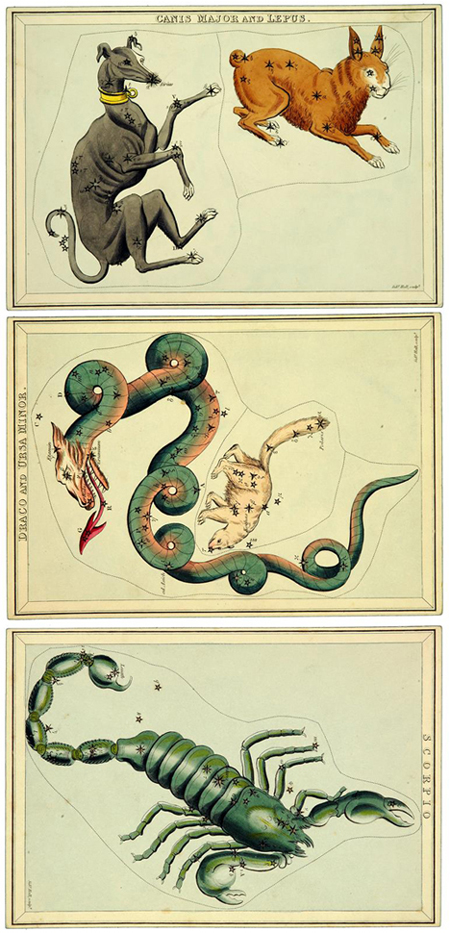 Did you catch that the 3 cards I pulled from the deck are Harry Potter references? Sirius, Draco, and Scorpius, respectfully. So a little stargazing, a little history, a little literacy, and an awesome bookmark for your summer reading books to boot.
Did you catch that the 3 cards I pulled from the deck are Harry Potter references? Sirius, Draco, and Scorpius, respectfully. So a little stargazing, a little history, a little literacy, and an awesome bookmark for your summer reading books to boot.